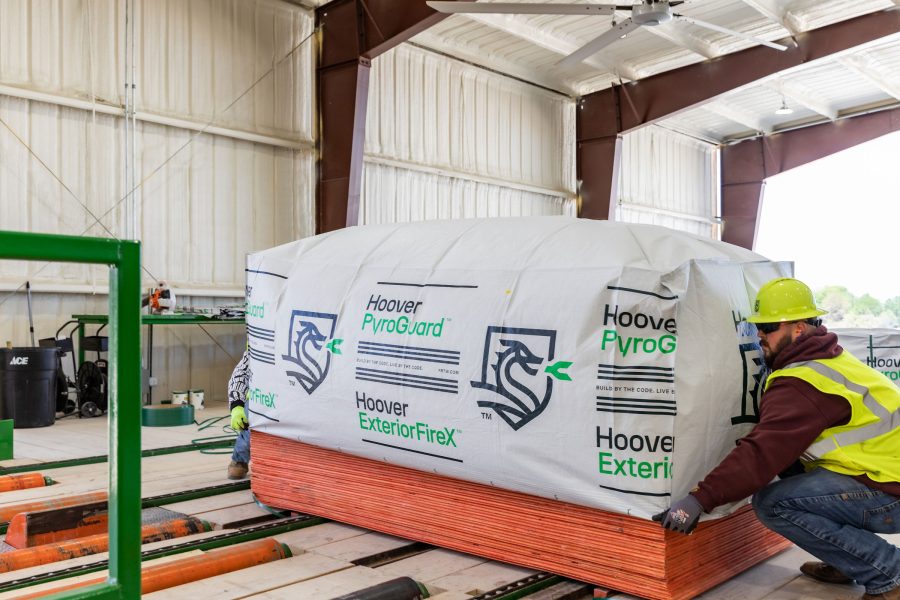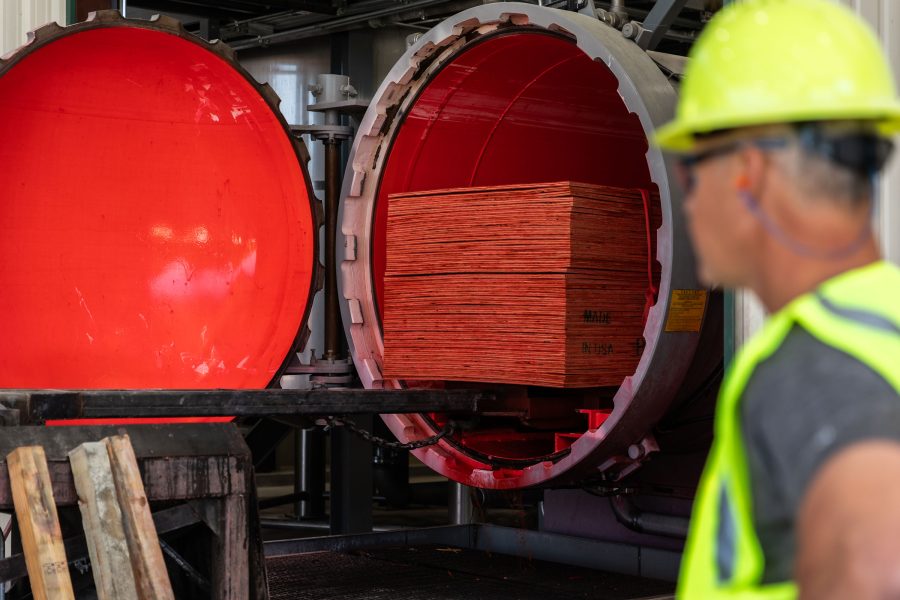Story at a glance:
- Fire-retardant-treated wood (FRTW) is an important, effective material for protecting homes and businesses.
- Building codes often are revised in the wake of disasters, which is what’s happening now.
“It is generally recognized that there is really no such thing as a fireproof building.”
Those may be surprising words considering the source. It’s what Dave Bueche, director of fire and life safety codes at Hoover Treated Wood Products, wrote in “New Developments in Structural Engineering and Construction” (published in 2013).
And he knows what he’s talking about. Bueche holds a Ph.D. in wood utilization and marketing from Colorado State University and is an active member in a wide breadth of fire-prevention professional associations: ASTM, International Code Council (ICC), National Fire Protection Association, Society of Fire Protection Engineers, Society of Wood Science and Technology, and is a past board member of the Forest Products Society. He is also an industry representative on UL Solutions Standards technical panel on surface burning characteristics of building materials and serves on ASTM and NFPA committees.
But none of this is to say Bueche is pessimistic about what can be done to prevent fires in both residential and commercial structures. Quite the opposite, in fact.
“Fires can occur in any type of structure,” Bueche writes. “The severity of a fire, however, is contingent on the ability of a construction to confine the fire, limit its effect on the supporting structure, and control the spread of smoke and gasses.”
Particularly in the wake of the epic wildfires in Los Angeles—an increasingly common occurrence across the globe in a warming climate—there is more than a germ of hope in that statement.
It’s Not Just Los Angeles

About one-third of the US population lives in wildfire-risk areas known as WUI. Photo by Digital Love
Fires that affect structures are hardly new. Rome burned, as did Chicago. More recently the fires in Pacific Palisades, Altadena, Paradise, and other California towns are said to have destroyed more than 36,000 homes. Approximately 200,000 residents, possibly more, were displaced in the 2023 Canadian wildfires. As the climate warms there is an increasing risk of fires to whole communities, sometimes in places previously unaffected by wildfires.
The National Fire Protection Association (NFPA) reported in 2021 that fire departments across the US responded to 1.3 million fires that year. Those fires led to 14,700 civilian injuries and 3,800 civilian deaths. About three-quarters of those deaths were in home fires. The damage from those fires is believed to have cost $15.9 billion.
Wildfires that affect dozens if not hundreds or thousands of homes at a time usually exist in what’s called the Wildland-Urban Interface, or WUI. As the name suggests, the term sums up the many interconnected factors for communities that border on natural (unbuilt) areas that are vulnerable to burning: fuel availability (wildland vegetation, its density and proximity to structures); the built environment combustibility (roofing, siding, decking, and fencing materials); historic fire patterns (fire causes, be they human or natural, seasonal weather trends), and ember exposure (how embers are subject to prevailing winds and accumulate near structures).
Insurers look at WUI for population density, firefighting infrastructure, and fire suppression capacity, such as water availability, municipal fire department equipment, and documented response times.
More than one-third of the US population lives in a WUI, according to “Planning the Wildland-Urban Interface,” a 2019 report published by the American Planning Association.
Building codes to address this vary from state to state and even city to city in addressing these risks. Because of how structures are built, the materials used can make a great deal of difference. So too are the distances between structures, if any, and the proximity of combustible landscaping.
Protection, Sustainability, and Codes

Hoover says PyroGuard was the first FRTW to be issued a Code Compliance report based on high temperature testing for roof heating and framing uses. Photo by Digital Love
Bueche, in his work with Hoover Treated Wood Products, endeavors to mitigate those risks. The company produces fire-retardant-treated wood (FRTW) that does just that: It slows or stops fire from igniting buildings. One product, ExteriorFireX, is used on structure exteriors and is specifically formulated to also withstand weather, high humidity, and dampness. The product best used indoors is its PyroGuard pressure-impregnated FRTW.
These aren’t just company claims, though. Building codes, architects, and owners require third-party verification of such materials. The gold standard of certification is UL (UL Solutions), which found “PyroGuard Fire-Retardant-Treated (FRT) Wood covered under this report has a flame spread index of 25 or less and a smoke developed index of 50 or less, when tested in accordance with UL 723 (ASTM E84) and did not show any evidence of significant progressive combustion when the test was continued for an additional 20-minute period. The flame front did not progress more than 10-and-a-half feet beyond the centerline of the burners at any time during the test.”
This is good news for builders opting to use wood in a quest for both safety and sustainability. After all, trees sequester carbon long before harvesting. That is in contrast to the carbon footprint of steel, concrete, brick, and glass manufacturing. Surprising to many is the fact that wood, particularly FRTW, is actually stronger than steel when exposed to extreme fire heat.
“Unprotected steel is pretty weak,” Bueche says. “FRTW maintains its structural integrity and slows the progression of fire. The char layer formed on FRTW is tenaciously adhered to the surface and, as the FRTW burns, it releases carbon dioxide and water vapor, which dilute the combustible gases produced by the wood. It also cools the wood surface.”
State of the Industry

Hoover Treated Wood Products produces fire-retardant-treated wood (FRTW) that aims to slow or stop fire from igniting buildings. Photo by Digital Love
In light of the mass destruction of wildfires everywhere, Bueche is seeing increased interest in fire-retardant-treated wood. Had more homes in Los Angeles used FRTW materials, would it have reduced the damage?
“Probably, particularly with siding and decks near the WUI,” Bueche says (wood decks in particular, with spaces between boards that can capture flying embers, are vulnerable to catching fire).
But the application of FRTW goes beyond homes in WUI regions. In addition to single-family residential applications, the Hoover products are useful in townhome construction, where FRTW eliminates the need for roof parapets at code-required firewalls.
It’s useful in the huge roof systems of large warehouses and big-box retail stores. There are military and nuclear power plant applications, particularly where wood scaffolding is used for construction and maintenance.
Roughly a third of the US is subject to disaster-resistant building codes. And as Bueche describes it, those codes have advanced over time. Decades ago the codes primarily addressed property assets as a value, less so that of human life.
“The codes originated from the insurance industry,” he says. “Over time a number of regional codes were developed based on the experience of catastrophes—fires, earthquakes, and storms.”
Guiding many states and municipalities is the International Wildland Urban Interface Code update in 2021, which addresses wildfire risks through regulations on materials, construction, and vegetation management. That code is created and published by the International Code Council.
So, as Bueche says, no building is fireproof. But with advancing materials technologies, methodologies, and code requirements—and greater public awareness about safety and property protection—stopping the advance of fires is getting better all the time.

